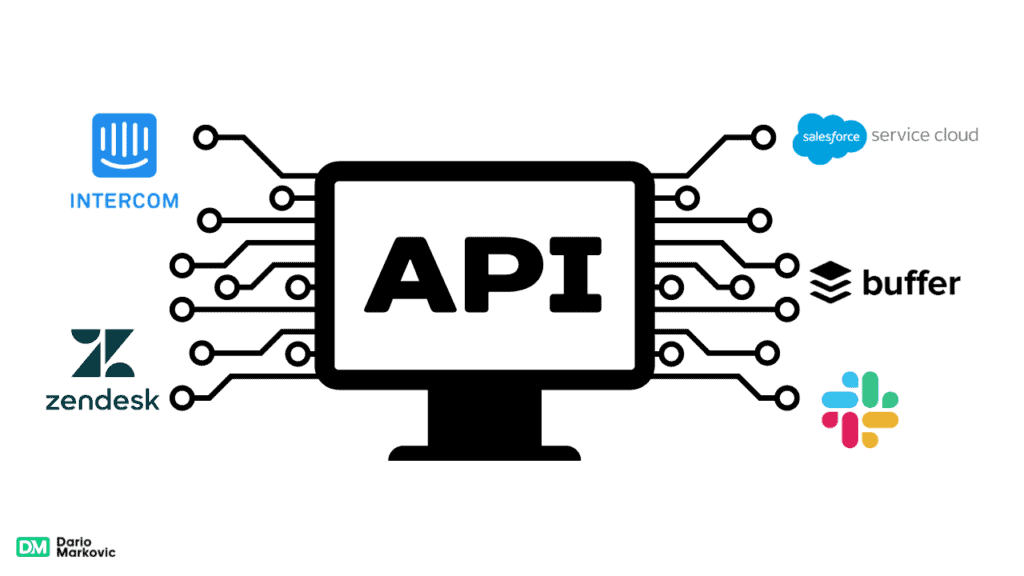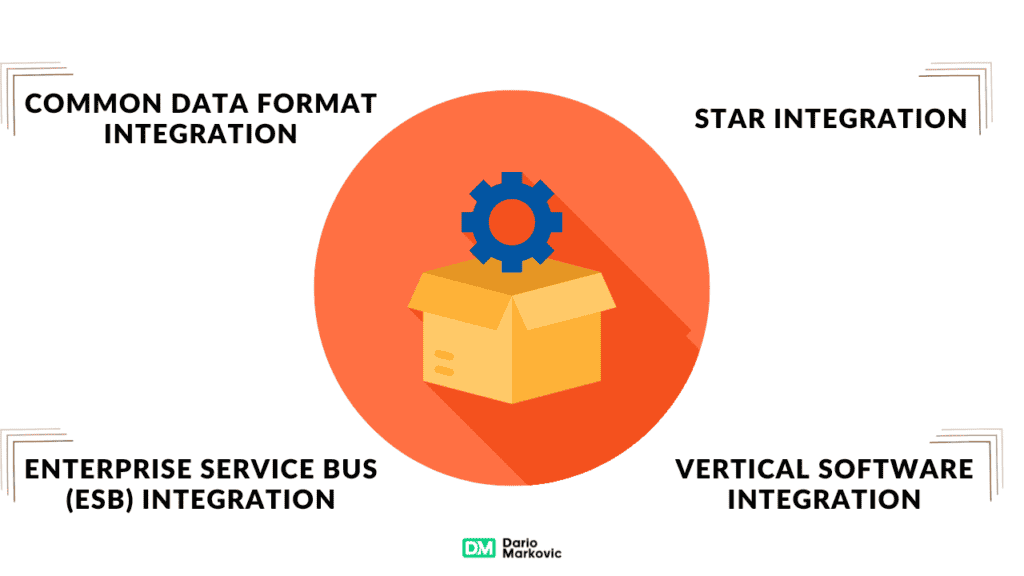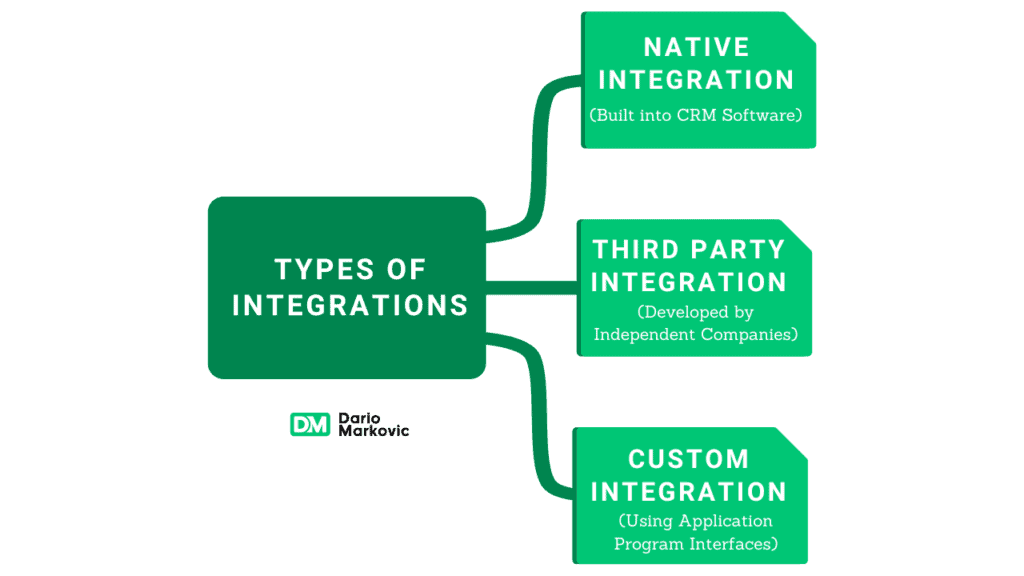Think about the last time you wished your integration tool worked seamlessly. That’s where software integration services come in – they’re like the skilled translators in a bustling world of diverse applications.
In today’s fast-paced market, businesses can’t afford to waste time on manual data entry or struggle with disconnected systems. The average ROI for companies investing in these services is staggering, highlighting not just a luxury but a necessity for staying competitive.
What is Software Integration?

Software integration is connecting different software applications to work together seamlessly. It’s about creating a cohesive ecosystem where data flows smoothly between systems. The goal? Now, things are zipping along faster, the work’s flowing smoother, and everyone’s having a much nicer time using it.
Software integration services enable the smooth linkage of diverse software applications within an organization, facilitating efficient data flow and communication. This segment fulfills a critical requirement in today’s ever-evolving business landscape, where the seamless integration of multiple applications is imperative for productivity and competitiveness.
Furthermore, it empowers companies to harmonize their systems, streamline processes, and elevate the quality of customer experiences. According to a recent study, businesses that successfully integrate their applications can see up to a 20% increase in operational efficiency. That’s a game-changer.
Common Challenges in Software Integration
Many of our clients use an extensive collection of “best-of-breed” software applications to run their businesses. These applications rarely communicate well with each other, making it difficult for clients to gain a “single version of the truth” about their business’s operational state and their customers‘ status. Overcoming these challenges requires expertise in systems integration, data management, and a deep understanding of business processes.
Types of Software Integration
Based on Service Type, the market is classified into infrastructure integration, application integration, and consulting services. Each type of integration serves a specific purpose:
- Infrastructure integration focuses on connecting the underlying hardware and networks.
- Application integration deals with making different software applications work together.
- Consulting teams bring their know-how to the table, helping you map out and nail down smooth integration plans.
Choosing the correct type of integration depends on your specific business needs and goals.
Top Software Integration Services

With so many software integration services, it can be tough to know where to start. Here are some top services that can help take your business to the next level.
Our developers perform multiple software integration services, including merging data in disparate applications, consolidating business processes, and creating Database Management Systems (DBMS) to ensure complete data integrity during the transfer process.
Data integration is about ensuring your data is accurate, consistent, and accessible across all your systems. A solid strategy is at the heart of making any software blend work smoothly. Creating database management systems lets you make the transfer process seamless.
API Integration Services
Celigo features an integration wizard with an API assistant, a visual field mapping interface, and drop-down menus. The tool also offers reusable pre-configured integration templates on the integrator.io marketplace, allowing users to create their library of reusable, standalone flows.
API integration allows different applications to communicate with each other through a set of protocols and standards.
It’s like giving your applications a common language to speak. We build software to provide the behind-the-scenes “plumbing” between applications. Please look at our case studies to see our computer systems integration services in action.
Enterprise application integration connects all the software applications used within a large organization. SQL server integration services is a platform that utilizes enterprise-level data integration and transformation solutions. It’s a complex process that requires expertise and careful planning.
Cloud Integration Services
Platform: Cleo Integration Cloud Cloud integration is becoming increasingly important as businesses move their applications and data to the cloud. It lets you connect your cloud-based applications with your on-premises systems, creating a flexible and scalable hybrid environment.
Choosing the right integration platform is key to success. When you’re on the hunt, aim for a platform rich in connectors, solidly secured, and user-friendly tools that make integration building and management a breeze.
Key Takeaway:
Connecting all your software streamlines your business. It boosts efficiency, smooths data flow, and improves customer experiences. Tackling integration challenges head-on can seriously up your operational game by 20%.
Whether it’s merging data or making apps talk to each other, picking the right service is crucial.
How to Implement Software Integration

Software integration is a game-changer. It’s the key to unlocking seamless communication between all your business applications and systems. But, implementing software integration can be a real challenge, especially if you’re unsure where to start.
That’s where this guide comes in. I will walk you through the essential steps to successfully implement software integration in your organization.
Defining Integration Objectives
First things first, you need to define your integration objectives clearly. What exactly do you want to achieve by integrating your software systems? Is it to streamline data flow, automate processes, or improve efficiency? Take the time to sit down with your team and map out your specific goals.
This will serve as your roadmap throughout the integration process. As companies endeavor to streamline operations, amplify efficiency, and maintain competitiveness, the demand for system integration services has grown substantially.
Selecting the Right Integration Tools
Next, you must choose the right integration tool for the job. There are many options, from integration platforms to custom-built solutions. The key is to find tools that align with your specific needs and budget. Look for features like ease of use, scalability, and robust security measures.
The editors at Solutions Review have developed this resource to assist buyers in finding the top integration platform as a service vendor for their organization’s needs.
Choosing the right product and solution can be a complicated process that requires in-depth research and often involves more than just the solution and its technical capabilities.
With your objectives and tools in place, it’s time to map the integration process. This is where you’ll learn how data will flow between systems, how data transformation must occur, and how everything will work together seamlessly.
In this process, it’s crucial to involve all relevant stakeholders, from IT to business users. Collaboration is key to ensuring a smooth integration. Our experienced team of specialists delivers IT system integration services that allow your disparate computer systems to exchange data in real-time.
Monitoring and Maintaining Integrations
Congratulations, you’ve successfully implemented your software integration. But the work doesn’t stop there. To ensure ongoing success, you must continuously monitor and maintain your integrations. This means looking for any issues or bottlenecks and addressing them promptly.
Regular testing and updates are also essential to keep everything running smoothly. Remember, software integration is not a one-and-done deal. It requires ongoing attention and care to reap the benefits truly.
Best Practices for Software Integration
Now that you know the key steps to implementing software integration, let’s dive into some best practices to ensure success. I can’t stress this enough: clearly defining your integration goals is essential. Without a clear goal vision, your integration efforts will lack direction and focus.
Take the time to document your specific objectives, whether improving data accuracy, reducing manual processes, or enhancing customer experiences. The system integration services market encompasses extensive services to harmonize various IT systems and solutions within an organization.
Choose Appropriate Integration Methods
Various methods exist for integrating software systems, from point-to-point to hub-and-spoke architectures. The key is to choose the method that best aligns with your specific needs and goals. Consider factors like scalability, flexibility, and ease of maintenance when making your decision.
From these Service Types, the application integration segment dominates the market by securing a revenue share of 48.3%. The application integration segment stands out as a dominant segment primarily because of its pivotal role in modernizing business operations.
Data is the lifeblood of any integration effort. That’s why ensuring data quality and consistency is absolutely critical. Establish clear data governance policies and procedures to maintain the integrity of your data throughout the integration process.
This includes defining data standards, implementing data validation checks, and regularly auditing your data for accuracy. Many of our clients have an extensive collection of “best of breed” software applications to run their businesses’ operations.
These applications rarely communicate well with each other, making it difficult for clients to gain a “single version of the truth” about their business’s operational state and their customers‘ status.
Establish Data Governance Policies
Speaking of data governance, establishing clear policies is key to the success of your integration efforts. These policies should outline how data will be managed, accessed, and secured throughout the integration process and beyond.
Involve all relevant stakeholders in developing these policies to ensure buy-in and adherence. Our developers perform multiple software integration services, including merging data in disparate applications, consolidating business processes, and creating Database Management Systems (DBMS) to ensure complete data integrity during the transfer process.
Key Takeaway:
Software integration can transform your business, making everything run smoothly. But it’s not always easy to get started. First, you must determine your goals, such as better data flow or more automation.
Then, pick tools that fit your needs and budget, looking for ease of use and security. Remember to plan every step with your team and keep everyone in the loop. Once everything’s rolling, stay on top of any issues and keep things updated to ensure everything stays well.
Software Integration Use Cases
Software integration is a game-changer for businesses. It’s not just about connecting different systems – it’s about creating a seamless, efficient ecosystem that can take your operations to the next level.
Syncing Customer Data Across Systems
Picture this: customer data is scattered across multiple systems, such as customer relationship management (CRM), content management (CMS), and more. It’s a nightmare trying to keep it all straight.
But with software integration, you can sync that data effortlessly—no more manual updates or inconsistencies. According to a Forbes study, companies prioritizing data integration are 5 times more likely to make faster decisions than their competitors.
Automating Marketing Workflows
Marketing business automation solutions is a lifesaver. With software integration, you can connect your digital marketing tools and automate repetitive tasks like email campaigns, social media posts, and lead nurturing.
It’s a huge time-saver and helps you deliver personalized customer experiences. Plus, according to Marketo, businesses that use marketing automation see an average of 34% increase in revenue.
Centralizing Business Reporting and Analytics
Data is power – but only if you can harness it effectively. Software integration allows you to centralize your business intelligence and reporting analytics in one place. No more silos or fragmented insights.
With a holistic view of your data, you can make smarter, data-driven decisions that drive growth and profitability. According to a McKinsey report, organizations that use advanced analytics are 2x more likely to be top financial performers.
Software integration offers endless possibilities. From streamlining operations to enhancing customer experiences, it’s a powerful tool for any business looking to stay competitive in today’s digital landscape.
Choosing the Right Software Integration Platform

With so many integration platform options available, how do you choose the right one for your business? It’s a big decision; the wrong choice can lead to headaches and wasted resources.
Key Features to Look for
First things first: you need to know what features to prioritize. Look for a platform with robust data integration capabilities, including support for various data sources and real-time syncing. API integration is also crucial, especially when working with cloud-based apps.
And don’t forget about scalability – your platform should be able to grow with your business.
Comparing Top Integration Platforms
Once you know what features you need, it’s time to compare the top players in the game. Some popular options include:
- Dell Boomi
- MuleSoft
- Jitterbit
- SnapLogic
- Celigo
Each platform has strengths and weaknesses, so it’s important to research and see which aligns best with your needs.
Evaluating Ease of Use and Scalability
Ease of use is a big factor to consider. You want an intuitive and user-friendly platform, even for non-technical users. To make integration a breeze, look for features like drag-and-drop interfaces and pre-built connectors.
Scalability is also key – your platform should be able to handle increasing data volumes and complexity as your business grows.
According to a report by Gartner, the enterprise application integration market is expected to reach $33.6 billion by 2025, driven largely by the need for scalable, cloud-based solutions.
Choosing the right software integration platform is a critical decision for any business. By prioritizing key features, comparing top options, and evaluating ease of use and scalability, you can find the perfect fit for your integration needs.
Key Takeaway:
Software integration is a must-have, turning messy operations into streamlined success. It boosts decision-making speed, increases marketing efficiency, and sharpens business insights.
Picking the right platform? Focus on data syncing, API support, and scalability to avoid future headaches.
Dario's Summary
In wrapping up our journey of software integration services, it’s clear that they are more than just an IT strategy; they’re essential building blocks for modern businesses aiming to thrive.
By bridging gaps between disparate systems, these services enhance operational efficiency and facilitate innovations that propel your business forward.
So, while Hollywood might have us believe AI and tech solutions are taking over in daunting ways, remember – when harnessed correctly through software integration services – technology is here to serve us, making our lives easier, one smart solution at a time.
Frequently Asked Questions
- Zapier.
- SnapLogic.
- Make (Formerly Integromat)
- Jitterbit.
- Celigo Integrator.io.
- Cyclr.
- TIBCO.
- WSO2.
Application integration has four standard levels: presentation-level integration; business process integration; data integration; and communications-level integration.
- MuleSoft.
- Zapier.
- Boomi.
- Oracle integration cloud service.
- Cleo integration cloud services.
- Talend cloud data integration platform
- E-commerce integrations.
- Customer relationship management (CRM) integrations.
- Cloud application integrations.
- Accounting software integrations.
- Human resources (HR) software integrations.
- Healthcare software integrations.
- Enterprise resource planning (ERP) integrations.
An API is either an endpoint or a collection of endpoints that allow you to access certain data or functionality from an application; all the while, integration is the process of making independently-designed systems communicate with each other.



